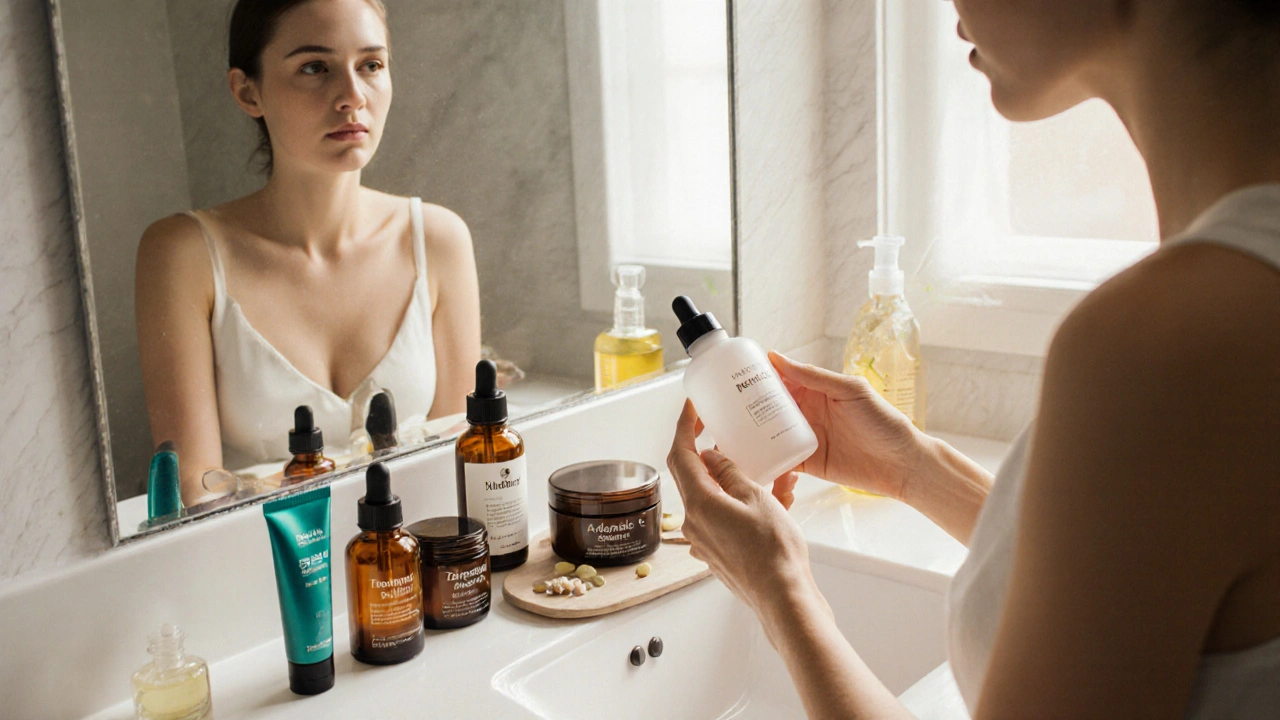Tretinoin Alternatives: What Works Without the Burn?
If you’ve tried tretinoin and ended up with red, flaky skin, you’re not alone. Many people love its results but hate the side‑effects. The good news? There are several gentler options that still give you clearer, smoother skin. Below we break down the most common alternatives, how they act, and when to pick one.
Top Over‑the‑Counter Alternatives
Adapalene 0.1% (Differin) – This is the most popular OTC retinoid. It works like tretinone but is less irritating for most skin types. Use it at night, start with every other day, and moisturize well. Most users see fewer breakouts within two weeks.
Retinol Creams – Retinol is a weaker cousin of tretinoin. It turns into tretinoin inside the skin, but the conversion is slow, so redness is milder. Look for products with 0.3%–1% retinol and add a gentle cleanser to avoid extra dryness.
Bakuchiol – A plant‑based ingredient that mimics retinoid benefits without the typical irritation. Studies show it improves fine lines and uneven tone similarly to retinol. It’s a good pick if you prefer natural‑sounding formulas.
Niacinamide – Not a retinoid, but it reduces inflammation and regulates oil production. Pair it with a mild retinol or use it alone for a calmer skin routine.
Prescription‑Free Options That Work
Alpha Hydroxy Acids (AHAs) – Glycolic or lactic acid exfoliates the top skin layer, helping with texture and dullness. Start with a 5% concentration and apply 2–3 times a week. Over‑use can cause sensitivity, so follow up with sunscreen.
Beta Hydroxy Acid (BHA) – Salicylic Acid – Ideal for oily or acne‑prone skin. It penetrates pores, clears blockages, and reduces inflammation. A 2% gel applied nightly can replace tretinoin for many breakouts.
Azelaic Acid – Works on acne, rosacea, and hyperpigmentation. It’s gentle enough for daily use and rarely causes irritation. A 15% cream or gel is a solid alternative for those who can’t tolerate retinoids.
When you switch from tretinoin, give your skin a few weeks to adjust. Start slowly, use a fragrance‑free moisturizer, and never skip sunscreen – retinoid‑type treatments make you more sun‑sensitive.
Finally, remember that no single product works for everyone. Try one alternative at a time, track how your skin reacts, and adjust frequency based on tolerance. If over‑the‑counter options aren’t enough, a dermatologist can prescribe a lower‑strength retinoid or combine treatments for best results.
In short, you don’t have to give up clear skin just because tretinoin feels harsh. With adapalene, retinol, bakuchiol, or acids like salicylic, you can still achieve a smooth complexion while keeping irritation to a minimum.

Retin‑A 0.05% (Tretinoin) vs. Top Skin‑Care Alternatives
A detailed comparison of Retin‑A 0.05% (tretinoin) with common alternatives like adapalene, tazarotene, retinol, azelaic acid, and vitaminC, covering effectiveness, cost, side effects, and who should use each.
